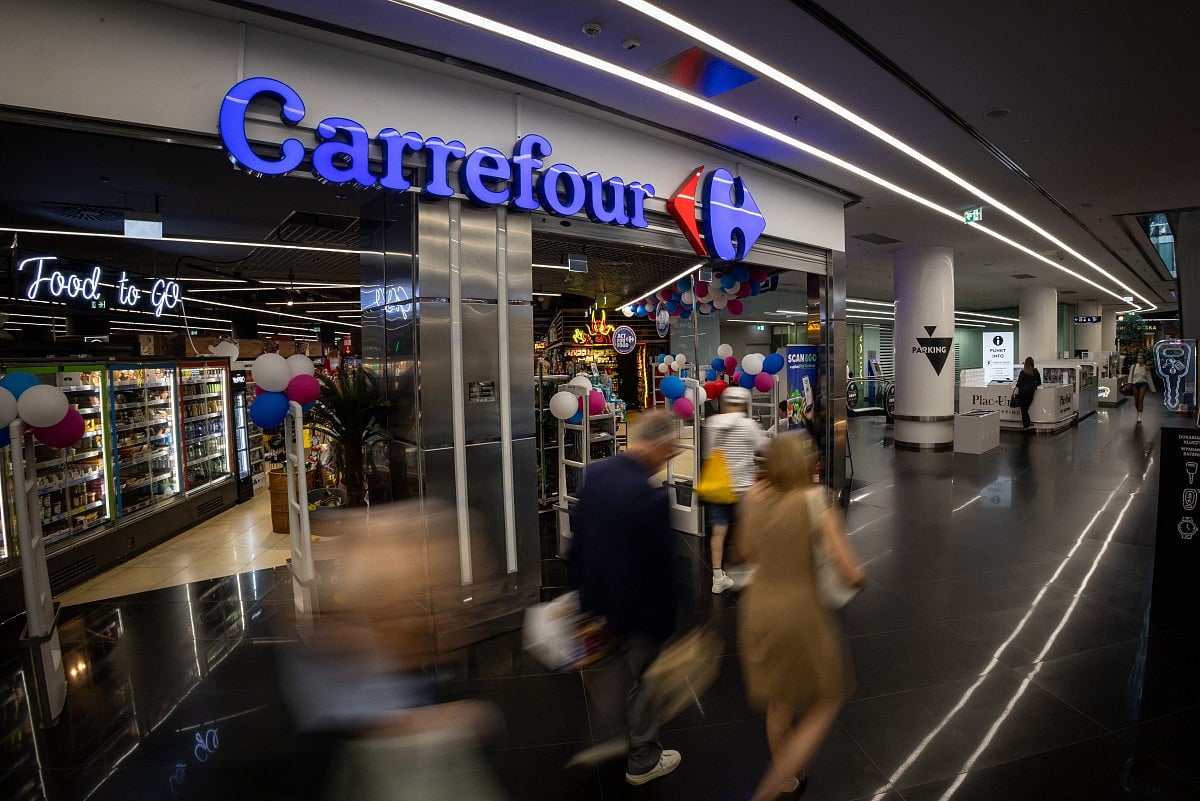Why Carrefour stores are shutting down abroad — but thriving in the UAE
While Carrefour sees struggles aboard, UAE shoppers are keeping the brand thriving

Dubai: When Carrefour began expanding globally in the 1970s, the French retailer offered more than just groceries — it introduced shoppers to a new shopping ritual: one trip, one cart, everything under one roof.
That model is faltering in Europe. Carrefour SA, once France’s pride and the world’s second-largest retailer after Walmart, has been retreating from key markets, selling operations in Italy and reviewing others in Poland.
While the Carrefour Group currently operates a global network of over 14,000 stores in approximately 40 countries, its share price hit a 32-year low this summer, and its market value — now around €9 billion — is a fraction of what it once was.
But in the Gulf, the same blue-and-red logo still greets long queues of weekend shoppers. Carrefour’s story here — run by Dubai-based Majid Al Futtaim (MAF) — is the opposite of decline. It’s a mirror reflecting how Gulf consumer behaviour, culture, and economics are reshaping modern retail.
Hypermarket culture
Across the UAE and Saudi Arabia, the hypermarket culture is alive and well. Big weekly grocery runs remain part of family life, and bulk buying still makes economic sense in a region where average household grocery spend sits near 30 percent of total expenses, according to Euromonitor.
While online grocery delivery surged after COVID-19, most GCC shoppers continue to prefer hybrid habits — browsing aisles in person, ordering pantry items online, and using loyalty apps to track savings.
That’s why Carrefour’s regional franchise hasn’t followed its European parent’s downsizing. Instead, MAF has expanded digital operations and modernised existing stores, investing in faster checkout, AI-driven inventory tools, and express delivery through the Carrefour app, which now counts over 1.5 million active UAE users.
UAE roots, global brand
Carrefour in the UAE has over 175 outlets across all seven emirates, including hypermarkets, supermarkets, and markets, and is operated by its exclusive regional franchisee, Majid Al Futtaim.
MAF operates more than 450 Carrefour stores across the Middle East, Africa, and Asia, including hypermarkets and smaller express formats in every UAE emirate. The company reported Dh28 billion in retail revenue in 2024, with the UAE and Saudi Arabia driving most sales.
Even after a 10 per cent revenue drop last year, linked to regional uncertainities and its effects on consumer confidence, Carrefour remains one of MAF’s most resilient divisions.
Its strategy is increasingly local. In Jordan, Oman, Kuwait, and Bahrain, some outlets were rebranded to HyperMax, emphasising locally sourced products. In the UAE and Saudi Arabia, the Carrefour name stays — but with a local identity: Arabic signage, Ramadan-specific promotions, and partnerships with regional food producers.
Retail shift takes shape
Carrefour’s evolution in the Gulf also points to a bigger shift: how the region’s shoppers are driving the next retail transformation.
Retail analytics firm NielsenIQ estimates that offline grocery sales in the GCC still account for about 85 percent of the market, compared with less than 50 percent in Western Europe. But Gulf retailers are blending that physical dominance with rapid digital adoption.
MAF’s investment in AI-enabled forecasting, micro-fulfilment centres, and private-label products — which now make up roughly a quarter of baskets in the UAE — shows how the Gulf is redefining the supermarket: not just bigger, but smarter and more local.
UAE consumers confident
Back in France, Carrefour’s CEO Alexandre Bompard has warned that political and economic uncertainty could push the French economy into recession as consumer spending slows.
In contrast, the UAE’s retail sales are forecast to grow 5–6 percent annually through 2027, driven by population growth, tourism, and relatively stable inflation, according to Alpen Capital.
That difference explains why Gulf stores still buzz while European ones struggle. The Gulf’s youthful demographics, higher disposable incomes, and social shopping culture keep physical retail vibrant even as global chains scale down.
Shopper habits to stay same?
Carrefour’s global retreat isn’t a warning for Gulf consumers — it’s a reminder that retail models must adapt to the markets they serve.
In the UAE and Saudi Arabia, that means more focus on local produce, AI-driven pricing, and faster, app-based services rather than bigger stores. MAF’s next growth phase is likely to come from omnichannel convenience — bridging physical and digital shopping rather than choosing between them.
Carrefour may be shrinking in Europe, but in the Gulf, it remains a part of everyday life — not just because it sells groceries, but because it understands how people here shop. And for now, that’s a story of endurance, not exit.
Sign up for the Daily Briefing
Get the latest news and updates straight to your inbox
Network Links
GN StoreDownload our app
© Al Nisr Publishing LLC 2025. All rights reserved.
